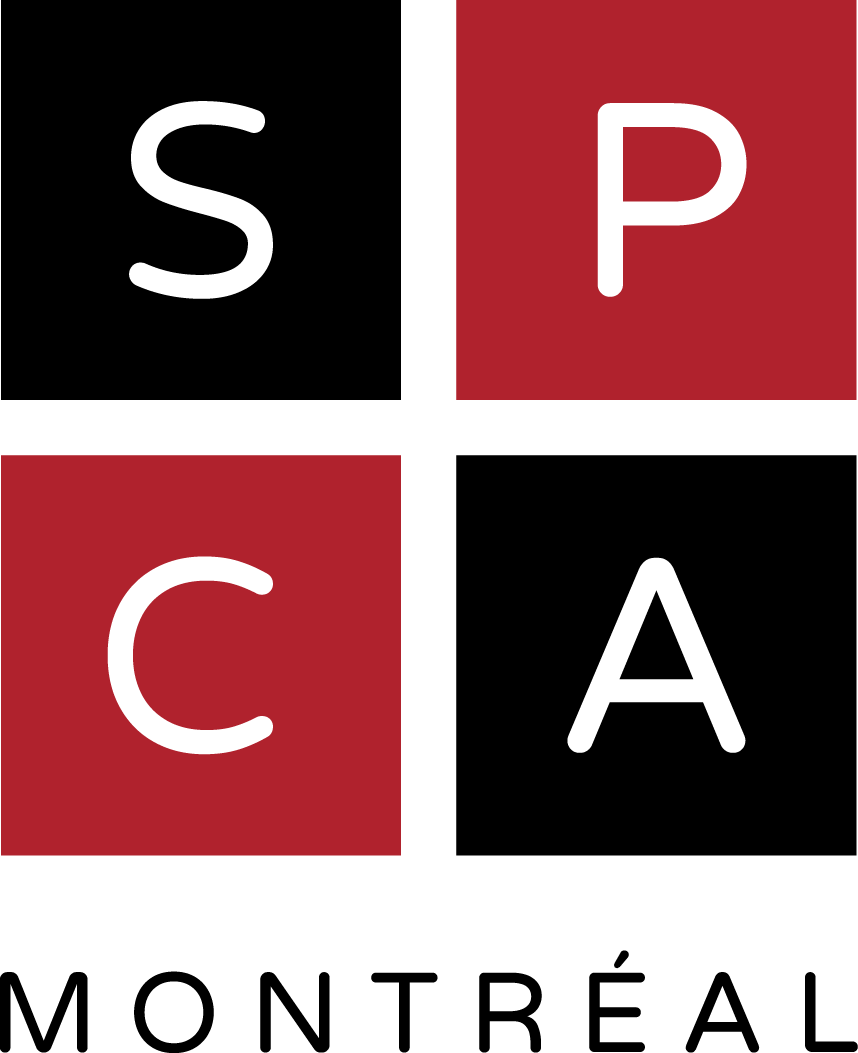Did you know that laying hens are the same species as chickens raised for meat?
They are simply different breeds that have been genetically selected to enhance certain traits, such as the number of eggs laid annually or the ability to gain weight rapidly, judged to be desirable.
Like us, hens can dream!
They also experience a unique sleep phase called unihemispheric sleep, where one hemisphere of the brain sleeps while the other remains awake. Hens can therefore sleep with one eye open, which is very useful for an animal who has many predators.
Hens have a complex communication system that includes more than 30 different vocalizations; they can tell other hens how they’re feeling, give warning signals in case of danger, alert them if they find food and even communicate with their chicks before they’ve hatched from the egg.
They also have good long-term memory and can recognize at least 100 different faces, including those of other hens and even humans!
In Quebec, there are about 5.2 million laying hens, but only 4% of them have access to the outdoors.¹
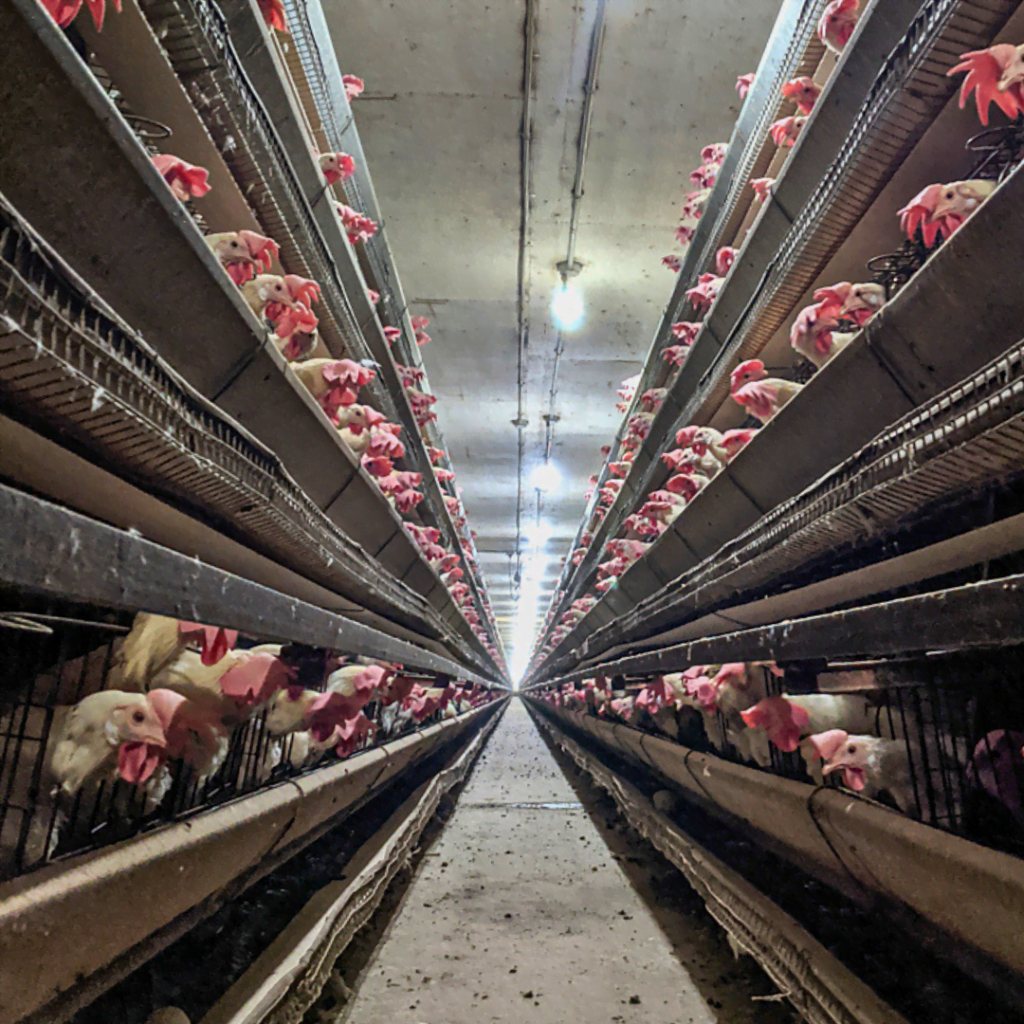
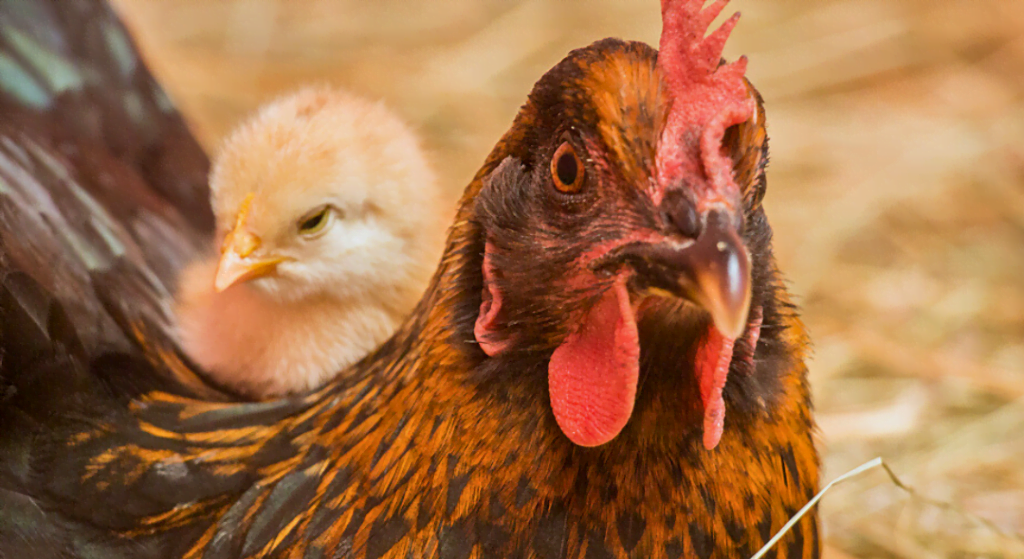
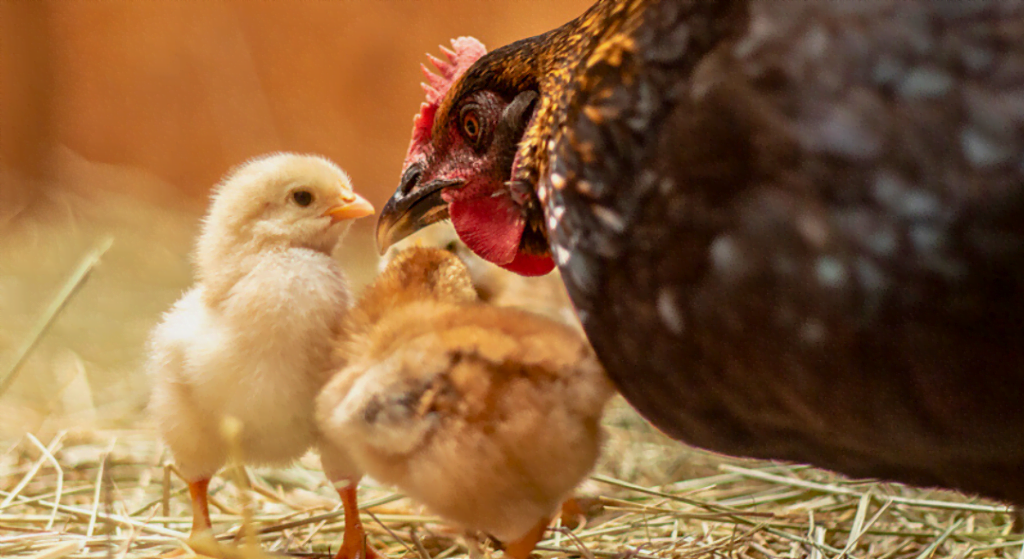
The term “mother hen” certainly rings true, since hens are excellent mothers. They teach their chicks what to eat, where to seek shelter, and how to respond to threats. Chicks reared artificially (without a mother) are more fearful and more prone to developing behavioural issues, such as pecking. Timid birds often react with panic, which can lead to incidents of suffocation and bone fractures.2
Did you know?
Chickens were domesticated around 3,500 years ago. They are primarily descendants of the red junglefowl (Gallus gallus), a bird native to Southeast Asia. They’re part of the larger Phasianidae family, which includes pheasants, quails, partridges, peafowls, grouse and turkeys.
Fig. 3 An Indian Red Junglefowl rooster, ancestor of laying hens.
The life of a laying hen in Quebec
A few hours after hatching, the chicks are sexed, meaning their sex is determined by spreading their wings to observe the feathers or by examining their cloaca. Female chicks are kept to become laying hens, while their brothers are killed as they serve no purpose in this industry. As a result, about half of chicks are systematically culled in the egg production sector, often through suffocation with carbon dioxide.3
Female chicks (known as pullets) are normally housed in groups, in cages with minimum dimensions of 432 square centimeters per hen as per Canadian standards. This means that, for her entire life, each hen will have less space than the area of an A4 sheet of paper. Pullets reach maturity at around 17 weeks of age.4
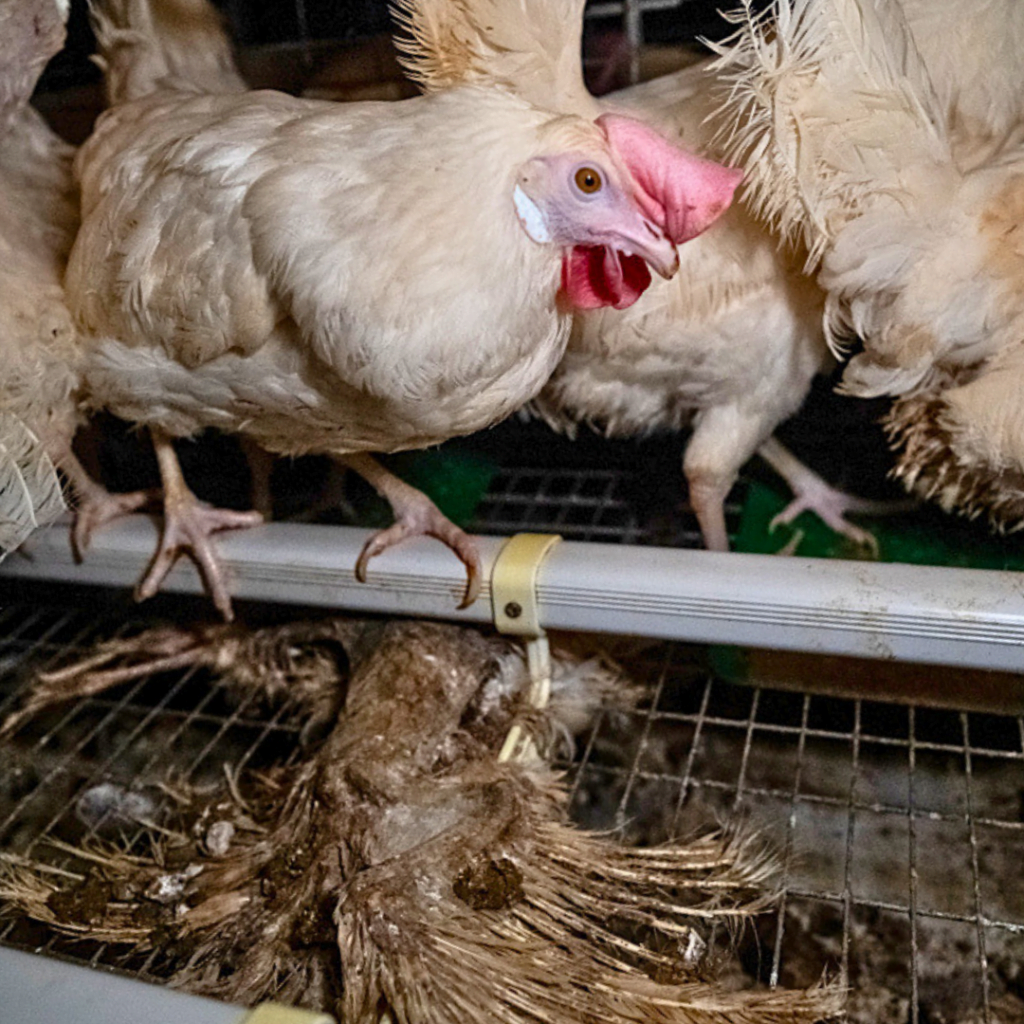
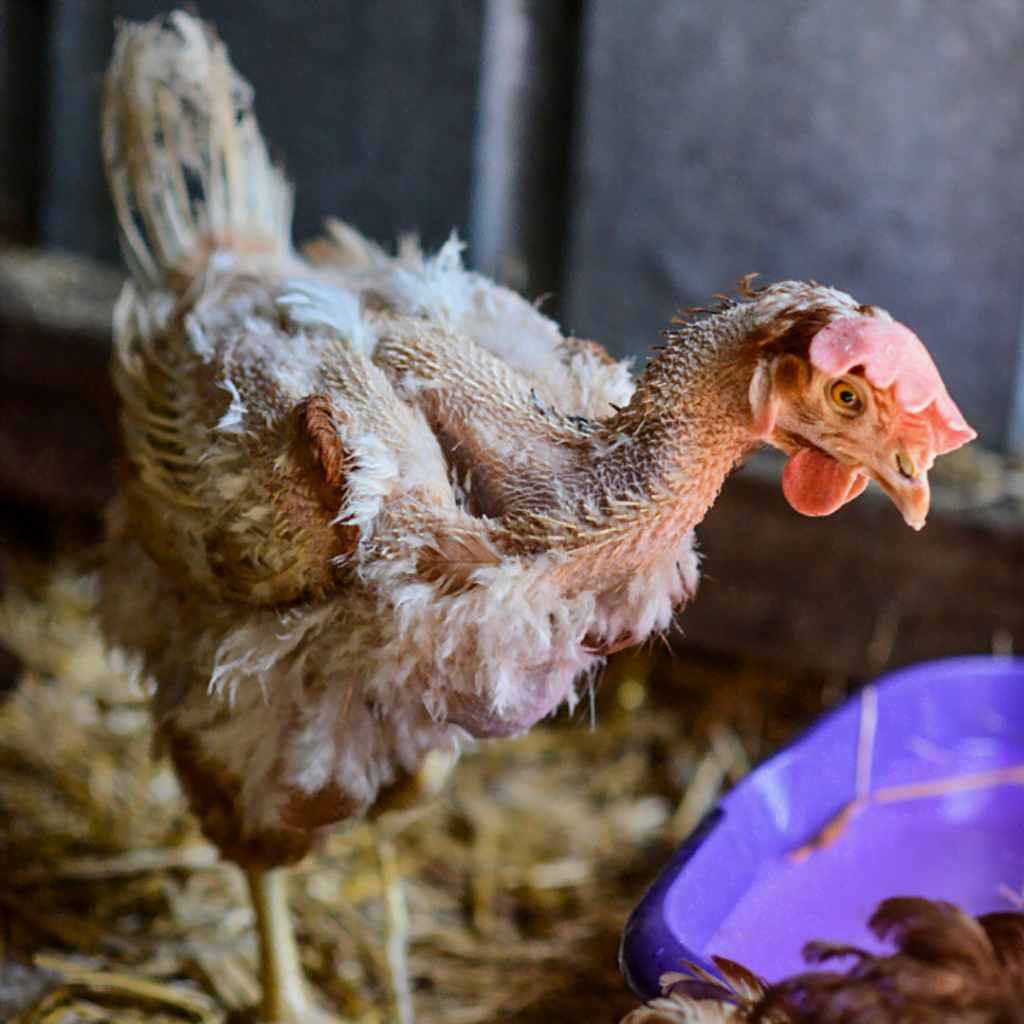
Despite having been domesticated for thousands of years, egg-laying hens have retained their natural instincts. They engage in natural behaviours inherited from their ancestor, the red junglefowl, such as dust-bathing to maintain their plumage, perching to observe their surroundings and rest, building nests, brooding their eggs and pecking at the ground in search of food. In cages, however, they can’t even spread their wings.
Additionally, the hierarchical social structure of hens combined with cage layout means some hens may struggle to access food and water, leading to malnutrition, dehydration, injuries and death.
In the wild, the hens’ ancestors typically had one brood per year, consisting of 4 to 6 eggs.5 Today, the average laying hen lays 330 eggs a year.6 They are usually sent to slaughter when their laying frequency decreases at around 1 year of age, despite their lifespan being 5 to 10 years.7 Since egg production requires a lot of calcium, egg-laying hens are highly susceptible to osteoporosis, making their bones even more fragile during transportation to slaughter. It’s not uncommon for laying hens to end their lives with fractured bodies.
Free-range hens
Some eggs labelled “free-range” in grocery stores might give the impression of hens roaming freely outdoors, but the reality is quite different. These hens typically spend their lives confined indoors, often in conditions almost as densely packed as battery cages (housing systems arranged in rows and columns, which are identical and connected in the same unit). What’s more, “free-range” hens may undergo the same mutilations as caged hens, and male chicks are usually culled shortly after hatching. Finally, since “free-range” isn’t a regulated term, consumers cannot assume it guarantees better welfare for the animals.
Fig. 6 An organic egg farm in Italy where hens are “free range”.
Current industry practices⁸
Certain practices allowed in the industry are incompatible with animal welfare. For instance, to prevent injuries among hens, chicks undergo beak trimming: a portion of the bird’s beak is removed using a tool that cuts and cauterizes simultaneously (e.g. a hot blade). This mutilation is carried out without pain relief. Moreover, improper beak trimming can result in acute and chronic pain.
The gradual shift to “enriched housing”⁹
In response to consumer concerns regarding animal welfare, the Canadian egg industry has pledged to phase out conventional cages in favour of a new type of housing known as “enriched housing” to distance them from the negative associations of the term “cage.” These housing systems offer slightly more space for laying hens and will be mandatory starting in 2036.
However, animal welfare is severely compromised in enriched cages. Although hens have a slightly larger area, they still spend their lives in cages and may undergo beak trimming without adequate pain relief. They cannot fully express their natural behaviours or forage for food on the ground. In a natural setting, hens spend 50% of their time foraging for food.
Elsewhere in the world
Battery cage systems for laying hens have been banned since 1991 in Switzerland and since 2012 in the European Union. Several U.S. states also prohibit this practice, including California, Michigan and Oregon.
Some countries, such as Germany and France, have banned the culling of male chicks and have replaced it with in-ovo sexing, which involves determining the sex of an embryo within the egg in order to eliminate male individuals. The adoption of this new practice is based on scientific evidence suggesting that the perception of pain in chick embryos begins only after the 15th day of incubation.10
What you can do to help hens
You can start by learning more about them! Here are a few ways you can help hens:
Sign to protect them. If you haven’t already done so, we encourage you to sign our manifesto asking for a regulatory framework governing the living conditions of hens and other farmed animals in Quebec, endorsed by nearly 40 well-known public figures in Quebec. This manifesto aims to amend laws so that these animals can finally receive the protections they deserve.
Learn more about hens by listening to the episode À quoi rêvent les poules? from our French-language podcast Au nom des animaux. It is also available on Google Podcasts, Spotify and Apple Podcasts. And encourage your friends and family to listen to it!
Another way to change the living conditions of animals like hens is to write to your Member of the National Assembly.
The most effective way to help hens is to reduce or eliminate your consumption of eggs. This way, you tackle the problem at its source. You can also advocate for the adoption of policies that promote a sustainable food transition.
What the SPCA is doing to protect hens
During a consultation held by the Canadian Food Inspection Agency (CFIA) as part of the food label modernization initiative, the Montreal SPCA submitted comments. The organization believes that the farming industry should be required to disclose the farming method used to produce meat, eggs, and milk through mandatory labelling. At present, there is no compulsory labelling for products of animal origin, and animal welfare claims are not regulated, making them unverifiable for consumers.11
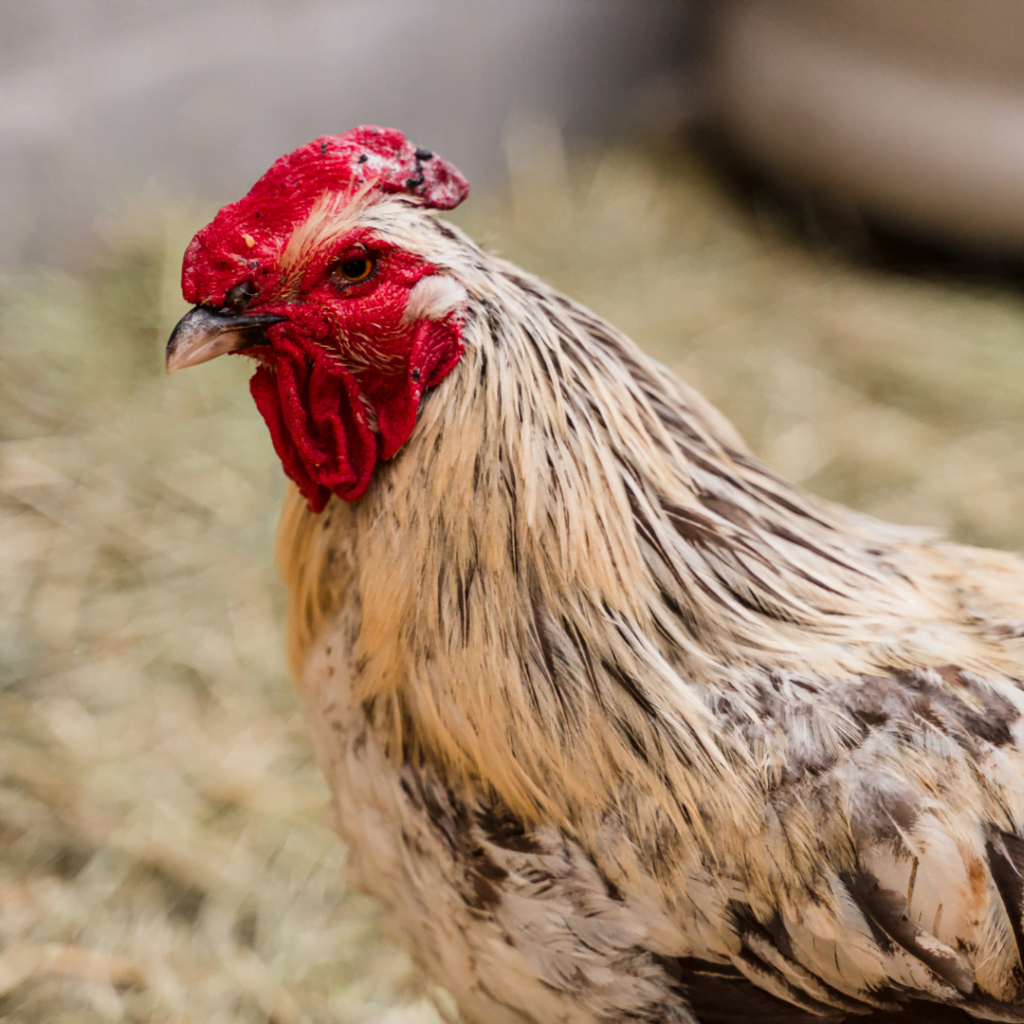
Photo credits:
- Banner phot: © Jo-Anne McArthur/We Animals Media
- Fig. 1 Photography: © Existence/We Animals Media
- Fig. 2 Photography: © Gabriela Penela/We Animals Media
- Fig. 3 Photography: © Abhishek Das, eBird
- Fig. 4 Photography: © Abigail Messier/We Animals Media
- Fig. 5 Photography: © Jo-Anne McArthur/We Animals Media
- Fig. 6 Photography: © Stefano Belacchi/Essere Animali/We Animals Media
- Fig. 7 Photography: © Audrey Loiselle
Sources:
- 1 https://www.quebec.ca/agriculture-environnement-et-ressources-naturelles/agriculture/industrie-agricole-au-quebec/productions-agricoles/production-oeufs
- 2 https://www.ncbi.nlm.nih.gov/pmc/articles/PMC4730119/
- 3 https://www.lapresse.ca/actualites/2022-11-03/industrie-des-poules-pondeuses/l-europe-veut-mettre-fin-au-carnage-des-poussins-males.php
- 4 https://www.nfacc.ca/codes-de-pratiques/poulettes-et-pondeuses
- 5 https://nbagr.icar.gov.in/wp-content/uploads/2020/02/Red-Jungle-Fowl-Chicken.pdf
- 6 https://www.getcracking.ca/sites/default/files/media/document/2019fact_sheet-egg_farmers_ontario_fre-lr2.pdf
- 7 https://www.ledevoir.com/societe/777230/40-des-poules-pondeuses-au-quebec-vivent-dans-des-cages-conventionnelles-interdites-en-europe-depuis-2012?utm_source=recirculation&utm_medium=hyperlien&utm_campaign=corps_texte
- 8 https://www.nfacc.ca/pdfs/codes/poultry_code_FR.pdf
- 9 https://ici.radio-canada.ca/nouvelle/1877301/poules-cages-logements-pondeuses
- 10 https://www.mdpi.com/2472206
- 11 https://www.ledevoir.com/societe/796883/alimentation-les-oeufs-de-poules-en-liberte-sont-ils-vraiment-produits-par-des-poules-qui-vivent-en-liberte
